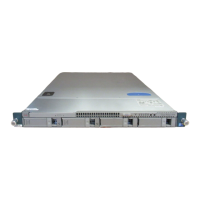CHAPTER
18-1
Cisco Nexus 1000V Troubleshooting Guide, Release 5.2(1)SV3(1.1)
OL-31593-01
18
SPAN
This chapter describes how to identify and resolve problems that relate to SPAN and includes the
following topics:
• Information About SPAN, page 18-1
• Problems with SPAN, page 18-2
• SPAN Troubleshooting Commands, page 18-3
Information About SPAN
The Switched Port Analyzer (SPAN) feature (sometimes called port mirroring or port monitoring)
selects network traffic for analysis by a network analyzer. The network analyzer can be a Cisco
SwitchProbe or other Remote Monitoring (RMON) probe.
The Cisco Nexus 1000V supports two types of SPAN:
• SPAN (local SPAN) that can monitor sources within a host or VEM.
• Encapsulated remote SPAN (ERSPAN) that can send monitored traffic to an IP destination.
For detailed information about how to configure local SPAN or ERSPAN, see the Cisco Nexus 1000V
System Management Configuration Guide.
SPAN Session Guidelines
The following are SPAN session guidelines:
• When a SPAN session contains multiple transmit source ports, packets that these ports receive might
be replicated even though they are not transmitted on the ports. Examples include the following:
–
Traffic that results from flooding
–
Broadcast and multicast traffic
• For VLAN SPAN sessions with both receive and transmit configured, two packets (one from receive
and one from transmit) are forwarded from the destination port if the packets get switched on the
same VLAN.
• After VMotion, the following might occur:
–
A session is stopped if the source and destination ports are separated.
–
A session resumes if the source and destination ports end up on the same host.

